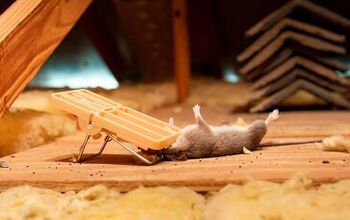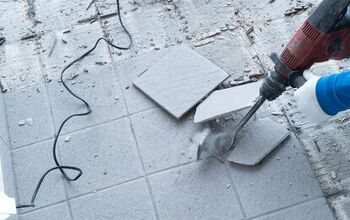How Much Does It Cost to Get A Fiberglass Mold Made?

Making fiberglass molds of machine, mechanical, and automotive parts can save you a fortune on replacements. Whether it be a part of a boat such as a hull, or simple washer plates, making a fiberglass mold of an item allows for customization, reproduction, and means you won’t have to buy from someone else. Fiberglass molds also open the door to mass production and sales.
Having a fiberglass mold made can cost between 6 and 10 times the actual cost of the item that you are molding. The price varies based upon the materials used, cost of the machine, and the volume of what you are molding. An injection molding machine costs $1,200 to $12,000 on the low end, and on average, injection molding professionals will charge $1,500-$12,000 as the starting rate for fiberglass molds.
If you are able to make a fiberglass or other type of mold of a part, you can then mass produce it easily. Because of that, many business-minded people will spend the $1,200-$30,000 to buy an injection molding machine themself if they produce large quantities of product. Once you have a fiberglass mold made, you can recreate a high volume of the original object for personal use or to sell.
Let’s get into the cost of having a fiberglass mold made as well as the process of injection molding, and the other popular materials used in the process.
How Much Does it Cost to Make a Mold?
Single cavity injection molds which produce one item generally cost $1,500 at the low end. Once you get into multi-cavity fiberglass molds that can produce multiple items per cycle, can cost as much as $50,000-$1,000,000.
The injection molding costs include:
- Materials (fiberglass, plastic, high-temperature resin)
- Injection molding machine
- Number of cavities the mold will contain
- Size of the object being molded
If you are only trying to produce a limited number of an item such as 1,000 reproductions, a single cavity mold may be all that you need. If you are trying to scale up production and sell over 1,000 items or simply stock parts for your own use, a multi-cavity mold is for you.
Fiberglass is a popular material for injection molding because of its heat resistance, strength to weight ratio, and durability. Using a single fiberglass mold, you could produce 2-3 units per day using an injection molding machine. Because it takes between 2 and 3 hours for fiberglass resin to cure, you are limited in the number of units you can produce using the mold.
If the item that you are molding has more than 200 parts, the fiberglass mold could cost as much as $12,000. Compared to a plastic thermoforming mold of the same size that costs $20,000 on average, fiberglass is the more cost-effective solution.
How Much Does an Injection Molding Machine Cost?
Injection molding machines can go for as low as $1,200 or as high as $30,000 or more. The price of an injection molding machine is largely based on what kind of machine it is. Primarily, there are four widely used types of injection molding machines:
- Electric
- Hydraulic
- Servo
For the most part, many machinists and manufactures prefer electric or servo injection molding machines over hydraulic. Every type of injection molding machine varies in price based on size and quality as well as the average energy consumption of each.
| Type of Machine | Average Price Range | Energy Consumption |
| Electric | $12,000 (small) $170,000+ (industrial quality) | 45%-60% |
| Hydraulic | $2,200 (small, low end) $25,000 (large) | 100% |
| Servo | $6,000 (used, small) $160,000 (large) | 65%-70% |
Electric injection molding machines are the choice of many for several reasons, including:
- High rate of production
- Clean (no hydraulic oil)
- Precision
- Automated features (on high end machines)
Higher end full electric injection molding machines come with automated features such as automatic lubrication. There are also safety features on electric injection molding machines to prevent foreign objects that may get in the machine’s path from being destroyed.
On average, professionals with injection molding machines will charge you between $20 and $330 per hour. Typically, injection molds take 2 weeks to complete which quickly adds up to $10,000-$20,000 if you are producing many objects.
Plastic Injection Molding Costs
Plastic is a common fiberglass molding alternative, and it costs an average of $12,000 to have plastic molds made. However, for smaller parts such as nuts, bolts, and washers, it could cost a little as $1,000-$5,000, especially if you are using a single cavity mold.
Let’s say, for example, that the item that you are producing is plastic TV remotes. If you wanted to produce a large volume of plastic remotes between 30,000 and 50,000, you would need multi-cavity molds. Because multi-cavity molds allow you to produce multiple objects with each molding, they are necessary for high volume moldings.
There are several types of plastic used in injection molding, such as:
- Polystyrene
- Polypropylene
- Low-density polyethylene (LDPE)
- High-density polyethylene (HDPE)
Each of the plastics above is roughly priced the same, but as with all aspects of injection molding, there is no set rate based on volume. Pricing is a case by case matter when it comes to plastic injection molding.
Low volume plastic injection molding where you produce 1,000 units costs between $1,200 and $10,000 dependent on how many parts are involved in the item you are molding. Mass production upwards of 10,000-100,000 units can cost between $10,000 and $20,000.
What is Short Run Injection Molding?
Short run injection molding refers to making a low volume of molds at a quick pace. It is a popular method due to the low short run injection molding cost. A batch of short run molding typically will not cost more than $10,000 or $12,000. With that said, many small businesses that need to produce an extremely limited batch of an item will opt for a short run than can cost as little as $1,200.
There are several benefits of short run injection molding that makes the method so popular, including:
- Cost effective
- You aren’t left with an excess of product
- It is a great way to test a particular molding material
- The process is quick
Generally, short run injection molding is used to mold small items such as tiny machine parts or hardware. You aren’t going to find many large businesses that use short run injection molding. That is because big businesses are only as strong as their product volume is.
Because of that, short run injection molding is ideal for small businesses or individuals trying to stockpile hardware or parts to use over the years.
How Do I Get a Plastic Mold Made?
To get a plastic mold made you need to do one of two things: hire an injection molding service or purchase a machine. Of these two options, hiring a professional service is the more common one. Generally, people only purchase injection molding machines themselves if they are producing a large volume of materials, i.e., 10,000-100,000 or more.
If you are not looking to produce a large volume of items yearly, opt to hire a plastic mold maker. Finding a professional plastic injection mold maker is as easy as looking up local machinists in your area. Once you have selected a particular mold making service, there are several things you need to consider and have prepared before starting the process.
1. Select the Material
What kind of plastic do you want? Whether you choose LDPE, HDPE, or polystyrene, the pricing will be roughly the same and the material will be high quality. The material that you choose affects the way in which the professional will go about molding the object.
For example, if you use LDPE or HDPE, the professional may choose to use epoxy over a metal such as steel for the mold to hold the plastic parts. That is because plastic can shrink, so using metal in the process can worsen or speed up the shrinking thus damaging the finished plastic.
2. Determine the Type of Mold You Need
There are two types of molds that professionals can create for you: prototype molds, and production molds. Of the two, prototype molds are the cheaper option. That is because protype molds are simple single or multi-cavity molds used as a way of, well, prototyping their product.
Because of that, you can only produce an extremely limited volume of items/products with prototype molds. Production molds, however, are used for full scale reproduction and mass production of the particular object.
The key difference is that production molds are made to last years to come, and often times, they are used to produce thousands of units over the years. For prototype molding, expect to pay a minimum of $2,000. Pricing gets trickier when it comes to full-scale production molds, however.
There is no ironclad cost for production molding, but the cost could range between $5,000 and $20,000 or more depending on volume. With that said, you can find services that are more or less costly depending on your location.
3. Provide the Service With Information
There are several things that the injection molding service needs to know, such as:
- Desired material
- Prototype or production mold
- Volume of items you need created
- Specifications of the item (weight, size)
Each of the above factors are important for the service to know well before production goes underway. A service cannot provide you with an estimate unless you provide detailed and accurate measurements.
From there, the service will provide you with a quote. If you are planning on producing a large volume of items, consider getting quotes from multiple services due to the high cost.
4. Inquire About Single Vs. Multi-Cavity Molds
The professional service that you are using will know which is best for your needs: single or multi-cavity molds. Generally, a service will be less likely to recommend multi-cavity molds if you are only producing a short run.
However, if you are only having a short run produced, you could always request multi-cavity molds to increase the daily output. In general, multi-cavity molds can save you big, especially when producing a large volume of items.
5. Determine the Mold Maker’s Standards
The Society of Plastics Industry (SPI) has a list of plastic mold making standards. Many professionals adhere to those standards. An example of an SPI standard that professionals follow is that they must produce specific parts such as nuts or pins that can be replaced with store-bought alternatives in the U.S.
That ensures that the items being produced will not be useless if one of the machine-tooled parts breaks or is ineffective. It is always a safe bet to choose a mold making professional that strictly follows the standards as set by the SPI to ensure that your money gets you the highest quality production.
Summing It Up
Having a fiberglass mold can cost you as little as $1,500 to $12,000. Purchasing an electric injection molding machine yourself can cost between $12,000 and $150,000. The cheapest option for injection molding machines is hydraulic, which ranges in price from $2,200-$20,000 on average.
A small batch, short run injection mold costs $10,00-$12,000 and is a common choice for small businesses. Once you get into mass production, multi-cavity injection molding can cost between $20,000 and $200,000.
Ultimately, if you want to have a fiberglass mold made, contact a professional service. Provide them with the object specifications and get a quote. Be prepared to spend up to $12,000 on the low end for high-quality fiberglass molds.
If you plan on a high volume of mold production for years to come, consider purchasing an electric or servo injection mold machine.
Good luck getting your fiberglass mold made!

Nick Durante is a professional writer with a primary focus on home improvement. When he is not writing about home improvement or taking on projects around the house, he likes to read and create art. He is always looking towards the newest trends in home improvement.
More by Nick Durante



























